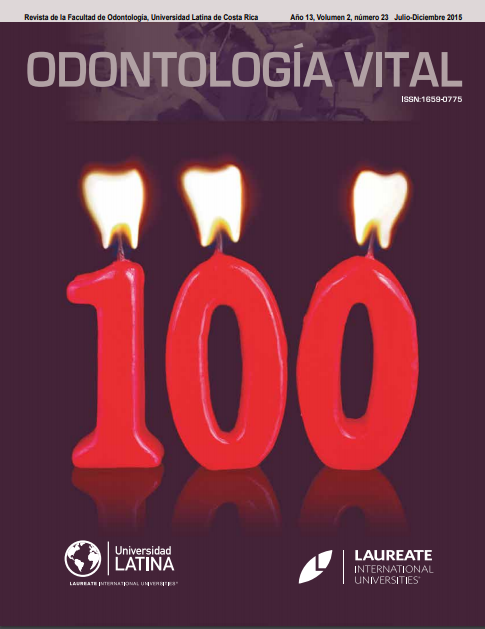Rehabilitation of the total edentulous patient using the technique of angled implants ALL-ON-4, zirconium hybrid bridges
DOI:
https://doi.org/10.59334/ROV.v2i23.275Keywords:
Dental implants, angled implant, immediate loading, zirconiumAbstract
In the current implant techniques have been developed that can offer better treatments to patients, from restoring
a lost tooth to fully edentulous rehabilitation of a patient. The protocols vary widely, parallel implants versus
angled implants, immediate loading versus conventional loading, acrylics versus zirconium.
The most important to determine which of these options is ideal factor for the patient, is conducting a proper
diagnosis dependent on the needs and possibilities of each specific patient.
Because the pattern of resorption of the maxilla and bone density available in this area, the percentage of
successful treatment decreases, we must considerate these characteristics in order to provide a adequate diagnosis
and treatment plan. In a globalized world, where our patients are increasingly informed and updated of treatments that can be offered, the clinician must strive to meet the expectations of these patients. The rehabilitation of the total edentulous maxilla with medium or severe alveolar resorption and pneumatization of the maxillary sinus has always presented a challenge, especially when the patient does not want to go through surgery for bone grafts, such as sinus lift augmentation or reconstruction of bone in block. Placing 4-6 angulated implants for rehabilitation treatment has been fixed that overdosed boom in recent years. Since Dr. Paulo Malo in Portugal described the technique in 1993, this procedure has crossed borders and more and more clinicians who perform. In this article the rehabilitation of the edentulous maxilla and mandible with implants and hybrid technique zirconia bridges is presented.
Downloads
Downloads
Published
How to Cite
Issue
Section
License
Copyright (c) 2015 Odontología Vital

This work is licensed under a Creative Commons Attribution 4.0 International License.
Authors who publish with Odontología Vital agree to the following terms:
- Authors retain the copyright and grant Universidad Latina de Costa Rica the right of first publication, with the work simultaneously licensed under a Creative Commons Attribution 4.0 International license (CC BY 4.0) that allows others to share the work with an acknowledgement of the work's authorship and initial publication in this journal.
- Authors are able to enter into separate, additional contractual arrangements for the non-exclusive distribution of the Odontología Vital's published version of the work (e.g., post it to an institutional repository or publish it in a book), with an acknowledgement of its initial publication.
- Authors are permitted and encouraged to post their work online (e.g., in institutional repositories or on their website) prior to and during the submission process, as it can lead to productive exchanges, as well as earlier and greater citation of published work.
Métricas alternativas











